The Intermittency of Wind and Solar: Is It Only Intermittently a Problem?
Editor’s Note: One of CleanTechnica’s awesome readers has provided us with this exclusive guest post on the “intermittency” of various power sources — renewable and non-renewables. The article “knocks it out of the park,” so to speak. Get into a discussion with someone about the “intermittency” of wind or solar power? Add this article to your list of pieces to share with them! (Also, I just linked to two others you can bookmark.) There are actually numerous very interesting and important points (and technologies) included in the article — it reads like a synthesis of much of what we have covered here on CleanTechnica for the past several years. It might well be my favorite article ever published on CleanTechnica. Enjoy! And share it with your friends!
by Victor Provenzano
After having been in denial for some time, the oil firms are now at wit’s end, it seems.
For years, they denied that any warming was underway at all. Then when some of them finally admitted it, they said, inaccurately, that scientists were still “unsure” of the cause. Now, perhaps, some of them are becoming too subtle for their own good, or even too clever by half. At times, what some of the oil firms are saying of late, particularly about the “intermittency of renewables,” may even be a little above the public’s head. The “perils of intermittency” may only be a viable argument for a “niche market” of global citizens who are somewhat informed about energy issues, yet not fully apprised. This is a good sign, it seems to me. The oil firms are apparently running out of ideas to try to convince us to move slowly on climate change, even before they run out of conventional oil and natural gas.
With the
price of wind power falling more and more, and the
price of solar PV falling sharply and enticingly, what other arguments will the big oil firms still have left to try to slow the transition to renewables when even the cost of natural gas may soon be unable to compete with the cost of wind in the Midwest or solar PV in the Southwest?
The “risk of intermittency” may be one of the only “reasonable” arguments that Shell or Conoco will still be able to make. And yet, who will even care? Soon, the US energy market, with its focus on price points, may simply say to the oil giants, “Frankly, my dear, I don’t give a damn about the ‘risk.’ ”
In short, if the wind is up and the light is right, the market will be sure to work out the kinks in the “intermittency problem,” if there are any.
So, how intermittent and reliable are renewables compared with the baseload power that is now furnished by coal, nuclear, or natural gas?
First, because of their “operational unreliability,” coal, atomic, and natural gas plants are highly “intermittent” over long time scales, such as the operating year or their entire active life span. They need a lot of planned or unplanned maintenance and repair; and being centralized power plants, they often have to be shut down completely for this work to be done, and, thus, are unable to furnish any power to the grid when this occurs. As a result of all this downtime, nuclear plants only generate electricity 83% of the time; combined cycle natural gas plants, 86% of the time; and coal plants, 88%. Nuclear plants are even more unsound and unreliable since many of them have to be shut down prematurely and since, during their active life span, more than a quarter of them have to close down for repairs for at least a year or more at a time. In short, a non-renewable baseload power plant can only serve as “baseload” for the grid when it is actually up and running, and since, on average, it is not on line around 7 weeks a year, a more accurate name for it might be “cyclically unreliable, long-term baseload.” If we simply describe it fairly, it may not sell very well. Thus, because of the unreliability of these baseload plants over the long term, our antique electrical grid always has to keep an ample amount of power in reserve beyond what is needed to meet maximum peak demand in the month of July. The entire arrangement is a comically inelegant, CO2-spewing, ecologically unsound, and inefficient system for supplying electricity via an archaic grid.
In a recent study, Synapse Energy claimed that a future, highly renewable, electric power system, whether or not it is accompanied by a new up-to-date smart grid,
could meet or exceed regional demand over 99% of the time without relying on storage.
What, conceivably, would this new system look like? How reliable would it be over the long term? And how would it solve the problem of minute-by-minute intermittency?
Any system of electrical generation based almost solely on renewables will rely on baseload power sources as well as intermittent ones. Among the key examples of renewable baseload power, one finds, above all, big hydro, geothermal plants, and solar thermal plants (with molten salt as a storage medium), while, in the future, biochar plants as well as combined cycle plants running on biogas alone may also be a source of renewable baseload power, and at the same time, may help us to restore the soil and to significantly curb carbon emissions from manure,
sewers, and landfills.
Since hydroelectric dams can be found across the US, in the north, south, east, and west, as well as in Canada, they can serve as a key source of either baseload power or reliable reserve power to smooth out the variability of the wind-and-solar-based grid of the future.
All in all, renewable baseload is more reliable than conventional baseload during its life cycle. On average, far less downtime is required in order to do planned or unplanned maintenance and repairs on renewable baseload power plants. For instance, solar thermal plants are up and running 98% of the time; hydroelectric dams, 95% of the time; and geothermal plants, 91%. As for any future combined cycle plants running solely on biogas, they would, one can assume, have more or less the same “reliability rate” as today’s combined cycle natural gas plants: around 86%.
The most intermittent renewables, wind and solar PV, are also the most reliable of all renewables. They require almost no maintenance and repair. Solar PV is able to generate power 98% of the time (in the Nordic summer when the sun does not set); onshore wind is able to generate power 98% of the time; and offshore wind, 95% of the time. What is more, in contrast to centralized renewable baseload plants, most often only a single solar panel or a single wind turbine will require repair or maintenance at any one time, not the entire wind farm or solar array; thus, a utility-scale solar array or wind farm is able to stay “up and running” when planned or unplanned maintenance is being done. To some extent then, the high degree of long-term reliability of wind and solar PV will partly offset the short-term variability that solar panels and wind turbines will experience, locally at least, yet only if, inconceivably, they are forced to remain in isolation from the smart grid with its array of distributed renewables and supple design strategies.
Can we make the “intermittency problem” more or less vanish? Or, rather, does it even exist? Over 200 studies have shown that there will be no major costs or technical problems for the grid until the percentage of renewables has gone beyond 30% of the energy mix. Many of those studies indicate that the actual threshold is far higher.
Meanwhile, in real life, by 2010, 4 states in Germany were already relying on wind power for 43 to 52% of their electric power needs without having to face any major crises, while a recent study showed that the supergrid in Europe will able to handle up to a 70% share of electrical energy from wind in spite of its minute-by-minute intermittency. So why all the fuss, then?
For one thing, trillions of dollars of “stranded assets” will soon to be at stake: coal, tar sands, gas shale, Arctic oil, etc. I am told that one way to radically reduce carbon emissions may be to keep those rare assets in the ground, where, for instance, they can be studied by paleontologists from BP and the Heartland Institute.
So, how can we overcome the “risk of intermittency” as minor as it may now seem? The good news is that most of the strategies we will need to overcome it are already being used in Europe, the US, and around the world: (1) minimizing electrical demand via improvements in efficiency; (2) creating an ample amount of storage and reserve power; (3) using a “smart supergrid” to link the various renewables, which will have to be widely distributed over the landscape, while using forecasting, demand response and supply management to do the fine-tuning; (4) creating a foundation for the new system by adding a certain amount of new, renewable, baseload power; and (5) relying on the daily as well as seasonal complementarity of wind and solar power to smooth out any remaining variability or intermittency.
If electrical demand were minimized by improvements in efficiency, there would be fewer kilowatts of electrical supply for the smart grid to manage as well as less variability for it to counterbalance. For instance, in the US, around 60% of the electricity consumed by industry is used to power electric motors. All told, in the entire US economy, there are around 3 billion electric motors at work in everything from fans and pumps to laptops and printers. If we were to replace most of these motors with the most efficient, new, variable speed motors, the savings would be immense and the new grid and its variability could be managed more easily. Second, if we were to maximize our use of daylight, while changing over to LEDs and at same time adding some sensors and controls to increase or decrease the amount of electric light according to the amount of daylight in each room, electrical demand would fall sharply, and, in line with the thinking of Mies van der Rohe, less might become more in the new renewable power system.
The system will surely need a certain amount of reserve power, especially for the hours and months of peak demand. According to NERC, the US currently has 23% more reserve power than is required to meet the upper limit of peak demand in July. Of course, a lot of it is needed not because of peak demand, but, rather, because the current US system also has to be able to replace all the unreliable power plants that are being shut down either prematurely or for maintenance and repair. In the end, how much reserve power would a system that is based almost exclusively on renewables need? Perhaps, less than it does now. Remember: onshore wind farms and solar arrays are reliable, or able to keep running, 98% of the time. Could that make all the difference?
The UK’s National Grid reports that only 22 GWh of fossil fuel reserve power was needed to back up the UK’s 23,700 GWh of wind electricity when there was no wind at all to harvest. This is partly because the wind is always blowing somewhere on the seascape or landscape—quite often, not far away—and thus wind power can always be sent from there to the towns and cities where there is less wind or no wind at all. It is the same for solar PV. One can always send a watt of solar power from a sunny spot to any dark corner of the nation “where the sun don’t shine,” if the transmission infrastructure exist. The experience in Europe shows that the more wind and solar one has in a variety of landscapes across the nation or in nations nearby, the more one can foresee how much power will be available and the easier it is to balance out any remaining variability or intermittency. For this reason, in the future, a “smart system” based on renewables may need even less reserve power than we do at present, not more. This, at least, is the view of Thomas Vitolo, PhD, of Synapse Energy, who co-wrote a recent study on the
future viability of a highly renewable electrical system. In light of all this, is the seriousness of the “intermittency problem” being inaccurately and more or less systematically overstated by many US energy specialists and leading media figures at
CNN and the
New York Times? It seems so.
In spite of this, it would still likely be better if the reserve power in the new system were potentially a form of renewable baseload power rather than being intermittent wind or solar. Since dams, big and small, are already being dismantled in the US and big hydro is now seen as an unsound or less green choice because of its effect on wildlife and its immense landscape footprint, the key green choices for renewable reserve power may, perhaps, be geothermal, solar thermal, biogas, and biochar. There are ample reserves of fairly accessible geothermal energy in the Western half of the US. There are also enough solar thermal resources in the Southwest to potentially power the US many times over. In an “aggressive” development scenario, biogas from anaerobic digesters could give the US a daily resource of methane equal to around 3% of our current natural gas consumption or possibly even as much as 8% in a “maximal” scenario. Finally, the energy created by
pyrolysis while making
biochar might also have a role to play.
As for the short and longer term storage needs in a future system based on renewables, our existing forms of storage can handle them.
At present, almost all the electrical storage capacity in the world is pumped hydro because the price is right and, happily, it can be ramped up in 15 to 30 seconds. Japan has hydro-storage capacity that is equal to around 10% of its overall electrical capacity, while Europe is at an already ample 5%. Since the comparative figure in the US is only 2.5%, there seems to be room for expansion.
Like pumped hydro, compressed air storage can only be sited in a rather limited number of places, and yet, it can be ramped up in only 30 seconds, and, by some estimates, its cost is now competitive with pumped hydro.
The more swiftly rampable forms of storage—such as batteries—are high in cost to say the least. Yet having more of this kind of storage would help to smooth out the variability and intermittency of renewables. Oil firms, such as Shell, insist that the high cost of battery storage remains a barrier to the introduction of renewables on a grand scale. This, of course, is nonsense, given that, by 2010 in some states in Germany, wind was furnishing from 43 to 52% of their annual electrical consumption even though those states have only a minimal amount of battery capacity. So, what if we were to somehow acquire more battery storage than we will ever need through the back door? It may indeed soon happen. Vehicle-to-grid storage, or V2G, is in the pipeline and is likely to come on strong at some point. In one optimistic scenario, almost a quarter of the US car fleet may already be electric by the year 2030. The amount of storage in those cars alone would give the grid an immense amount of swiftly rampable storage capacity, far beyond any of its needs. What is more, the
new GE “Brilliant” wind turbines already have enough battery storage within them to help to smooth out the local variability of the wind power being generated at utility-scale wind farms.
And, yet, in spite of all this, the idea that there will be a need for a lot of new additional storage capacity to offset the intermittency of renewables is, it seems, an abiding myth. The good news is that it is being shattered in practice in Spain, Denmark, Germany, and Portugal, as well as in Iowa.
Not only are the solutions needed to remove any of the remaining kinks in a highly renewable grid already in place, an astonishing number of promising new storage technologies are, by now, in the pipeline, and are only months or years away from making waves. One example: inexpensive molten salt as a universal storage medium. It is already being used, of course, as a means of
storing energy at solar thermal plants in Spain and
elsewhere, allowing some of them to generate whatever amount of electricity might be needed from minute to minute in an operation running 24/7. At the same time, with a wider application in mind, a number of firms and researches are hard at work trying to see if molten salt can be used as an efficient storage medium for all the other forms of renewable energy. The beauty of it is that after an entire day has passed, molten salt, in its highly insulated container, only loses 1% of the heat that it absorbed the day before. A nice day’s work for the little wunderkind.

Credit: Bruno Burger, Fraunhofer ISE
The
complementarity of wind and solar is yet another trump card for the soon-to-be renewable grid. The
natural “balancing act” of wind and sun will help to limit the effects of both variability and intermittency and ensure that they are even more manageable.
Overall, in the US, wind farms generate more power at night, while solar arrays generate power only in the daytime. Quite often, in the late morning, when the wind is dying down little by little as the sun rises higher, the sun is shining more brightly on one’s solar panels; while in the late afternoon and evening, as the sun descends in the sky little by little and furnishes us with less solar power, the wind is often rising and thus spinning one’s turbines more often and at a higher speed. What is more, when the wind dies down completely in the daytime, the sun is often shining more brightly than at most other times during the day.
Sun and wind, it seems, are uncannily harmonious: normally complementing each other, at times they sing as a tag team, then both do, at the same time, to the same effect.

This daily complementarity of wind and solar is then seconded by a high degree of seasonal complementarity: overall, in the US, in spite of any variations from region to region, the sun shines brighter in the summer, while the wind blows more strongly and frequently in the winter. During the spring and fall, which are times of transition, the sun and the wind, in a sense, “meet in the middle”: as the sun begins to lose its brilliance in the fall, the wind rises; and as the wind begins to die down in the spring or late spring, the sun shines more brightly. All in all, the sun and wind were, it seems, unwittingly, “made for each other,” at least as far as the soon-to-be renewable grid is concerned. As if by design, by means of this complementarity, the two forms of renewable energy that are likely to be the most common in the near future will soon work side by side to limit the effects of variability and intermittency.
In the future, a new, smart supergrid will oversee, harmonize, and calibrate the entire renewable system, with its reduced demand, its mix of storage and reserve power, its renewable baseload, its distributed power, and its complementary sources of power. Variability and intermittency will occur only at the local level, where, however, wind turbines will use their own battery storage to smooth out the differences and solar panels will use microinverters and power point trackers to maximize output. At the level of the entire supergrid, variability and intermittency will all but vanish as the smart links in the grid allow it to reassign power, here and there, from nearby or far off, so as to harmonize supply and demand while at the same time reducing the variability of both. Chanting “E pluribus unum,” Oscar Diggs—or “Oz” for short—will sit behind the curtain, but this time he will indeed, more or less, see all and know all. He will be able to forecast the weather with precision, revise the forecasts minute by minute, plan ahead as to where power is needed, incessantly recalibrate, and almost always win the game, unless there is a solar flare or a 30-foot tsunami that can outsmart him.
As for the grand-scale demand response capability of the US supergrid, it is already there in “analog” form: grid masters in the US and Canada already have the ability to reduce peak demand by more than 66 GW, the equivalent of around 8% of peak demand in the US. That demand response capacity is set to more than double by 2020. In the smart supergrid of the future, demand response will be far smarter and make it that much easier to add more wind and solar to the energy mix.
On the other side of the equation, there are the “supply management systems.” For instance, WEMS, or wind energy management systems, are now able to monitor a set of wind farms across a regional or national landscape in real time, while at the same time ramping wind farms up or down, balancing the voltage minute by minute, and planning for maintenance and repair. The same can be done, unsurprisingly, for rooftop and utility-scale solar and for the entire array or assortment of renewables, old and new, so that a portion of the national supply of electricity can either remain as reserve or be ramped up or down as needed without a hitch. “Nationwide supply management” for the digital age can only be a short time away. It only has to wait for the arrival of the supergrid.
Finally, the “virtual power plant” seems to offer us a glimpse at what the smart, attentive supergrid will one day be able to do on a local, regional and national scale. Since the “virtual power plant” already combines demand response with supply management, it is a miniature smart grid on the way to being “super.” By overseeing and, at the same time, balancing supply and demand, it is able to integrate a variety of small renewables across the landscape to form a “virtual” centralized plant that can then act in concert with wind farms, solar utilities, geothermal plants, and all other centralized power installations. In an instant, it will place your CHP and rooftop solar in communication with the micro-hydro and the biogas plant of the farm 30 miles away so that they—along with scores of other micro-renewables—can all act as if they were a part of a single “centralized plant.” Eventually, a smart, nationwide supergrid may make the entire US grid run by using the same kind of delicate balancing act of supply and demand as well as the same high wire act of interconnectivity, yet, this time, over even wider distances.
An accomplished smart-ass, the new, emerging grid will borrow kilowatts from Peter to pay Paul, with Paul, unimaginably, even paying him back in megawatts if, at any point, that is what Peter needs.
So there it is. It may not be in place yet, but the emerging grid is coming into view little by little and will use many familiar methods. As McLuhan said, “The future of the future is the present.”
A mix of reduced demand via efficiency, reserve power and storage, renewable baseload, and the complementarity of wind and solar will enable the new nationwide grid to outwit and elude intermittency. Since it will foresee the weather, divine and minimize demand, and array the supply of power as needed over the entire US landscape, the smart grid will win minute by minute, or almost always; or, at least, far more often than the masters of our quaint, current, antique grid, with its widescale blackouts and its recurring brownouts and surges.
And so, in spite of all the musing of Shell Oil about the “intermittency problem,” which was always an exceedingly minor affair, its days are now numbered. Beginning with zero.
As it was never a “problem” to begin with.
Victor Provenzano is a LEED consultant who is currently writing a book on the global ecological crisis. We’ll be sure to share it when it’s published! Victor lives in New York City if you’re interested in some LEED support. You can contact him at: victorprovenzano1@gmail.com
 According to Fox Business reporter Shibani Joshi, renewables are successful in Germany and not in the U.S. because Germany has “got a lot more sun than we do.” Sure, California might get sun now and then, Joshi conceded during her now-infamous flub, "but here on the East Coast, it's just not going to work." (She recanted the next day while adding new errors.)
According to Fox Business reporter Shibani Joshi, renewables are successful in Germany and not in the U.S. because Germany has “got a lot more sun than we do.” Sure, California might get sun now and then, Joshi conceded during her now-infamous flub, "but here on the East Coast, it's just not going to work." (She recanted the next day while adding new errors.)


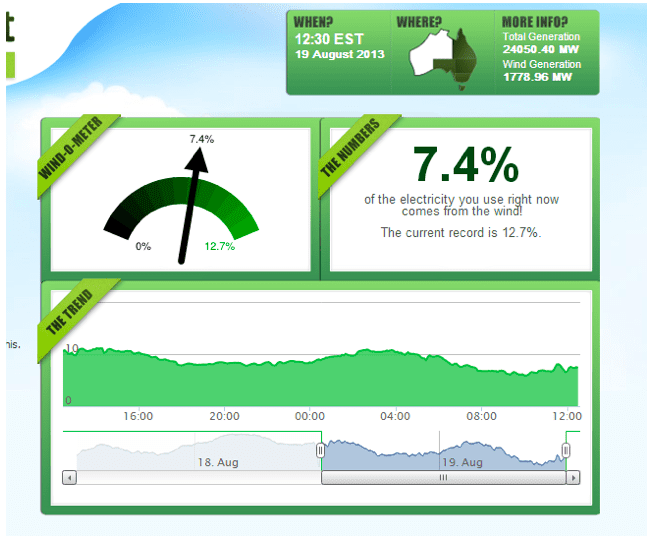
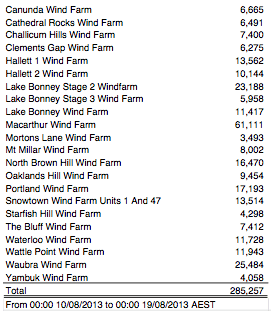
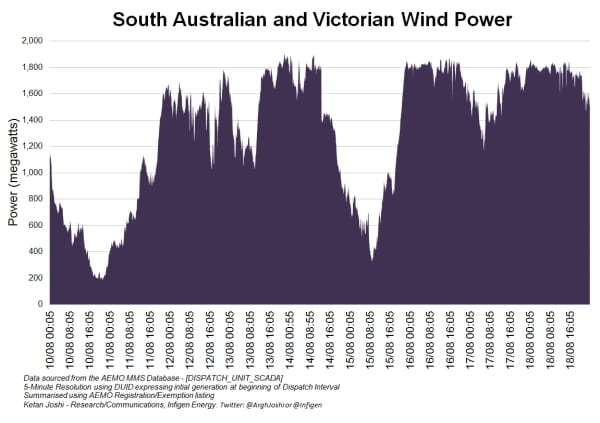
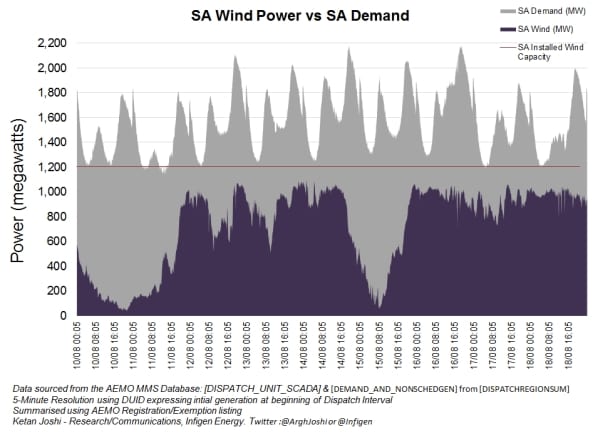

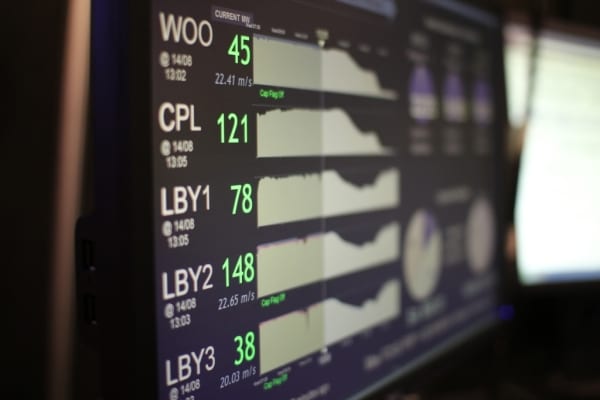
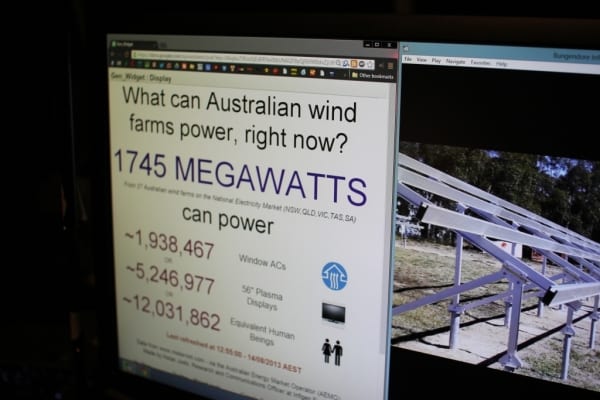

 that renewables can surpass gas by 2016 in the global power mix, in part because of subsidies from governments, but the industry must not be complacent lest it wants to face a decline, the report has warned.
that renewables can surpass gas by 2016 in the global power mix, in part because of subsidies from governments, but the industry must not be complacent lest it wants to face a decline, the report has warned.